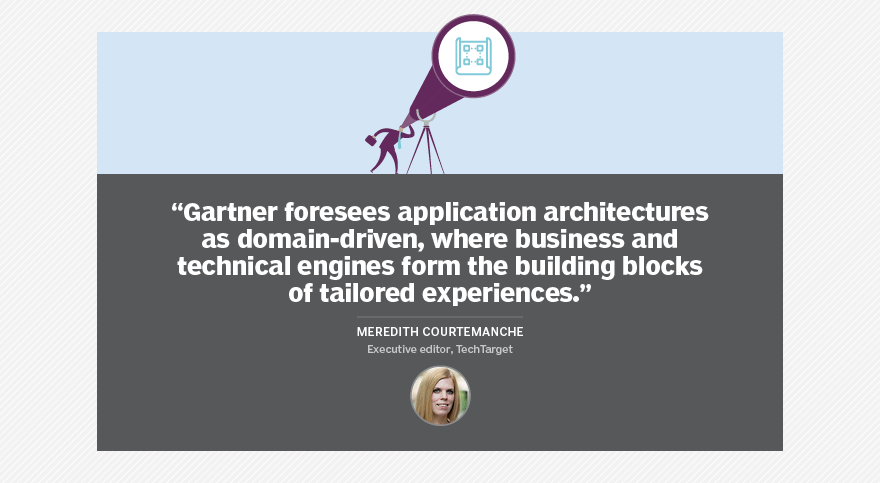5 predictions for 2020 software architecture trends
Modern application architectures are often modular, assembled from data-independent -- but integrated -- functional components. And according to analysts at Gartner, these components are usually coupled with a multiexperience user interface. In 2020, to be flexible and customer-centric, application components must integrate and retain data autonomy.
Apps have been in a slow-motion explosion since client/server architectures arose in the 1980s. Today, APIs connect application components, microservices enable finely segmented architectural independence, and event triggers replace unchangeable execution paths. Now, user activity will dictate the time that data, events and processes activate, and in what sequence they occur.
Gartner foresees application architectures as domain-driven, where business and technical engines form the building blocks of tailored experiences. Instead of coding each app, an organization can assemble and reassemble these functional building blocks into thousands of applications, based on factors such as a user role or customer type. These components can connect to UI blocks that yield the rich multiexperience user interaction customers expect.
Multiexperience means applications perform across web and mobile interfaces, through wearables and in conversational and immersive interactions. Multiexperience applications put a company's traditional products, such as cars or logistics management, into a data-driven, digital context to improve purchases, speed up training and accomplish other business goals.
To compose these modern application architectures, IT organizations will need to source functional building blocks from SaaS vendors, internal IT teams, AI-based tooling and other system integrators. With the help of low-code development platforms, business units within the organization can assemble workflows and connect disparate data through these building blocks. For example, a collection of account and asset management application services can transform into applications for HR and ERP systems that are all secure and governed the same way. In fact, Gartner predicts that by 2023, 40% of workers will orchestrate their business app experiences.
Not ready for autonomous units in a modern application architecture that can move around and own their own data? Start with APIs. APIs are a way to connect legacy industry applications with disruptive innovations. The application architecture at most organizations will be hybrid for a long time. New builds in a cloud-native format with composable back-end services will coexist with legacy applications. But within 10 years, applications and application development may be unrecognizable.
Meredith Courtemanche is an executive editor covering cloud and DevOps at TechTarget. These predictions come from Gartner's Helen Huntley, Daryl Plummer, Yefim Natis, Dennis Gaughan and Gene Phifer.






